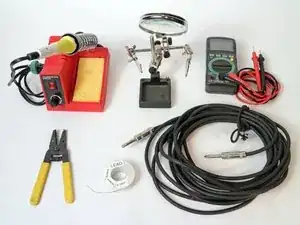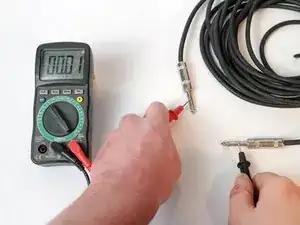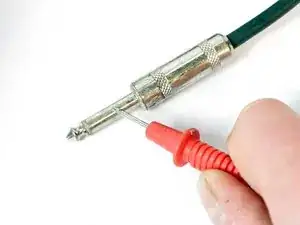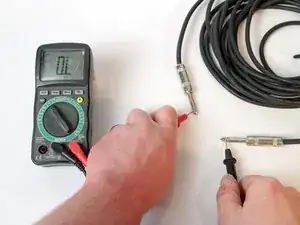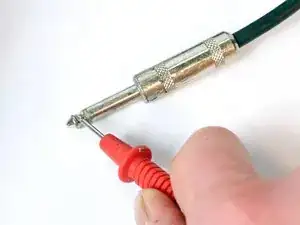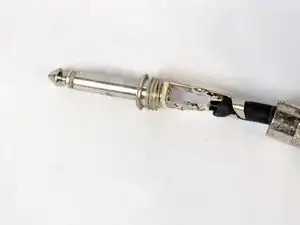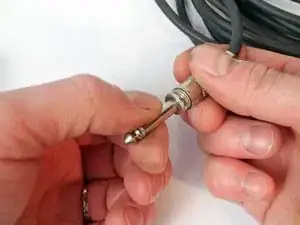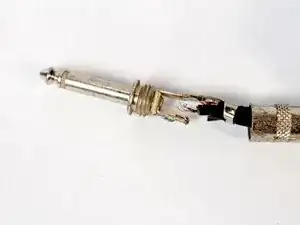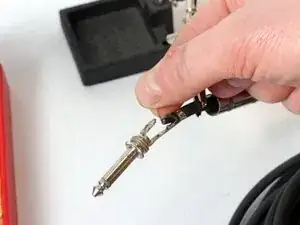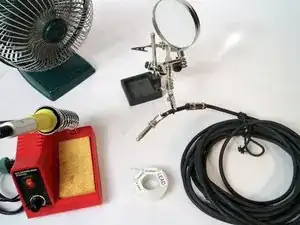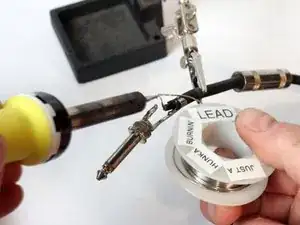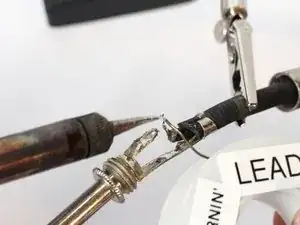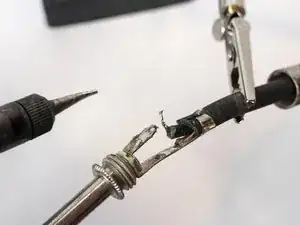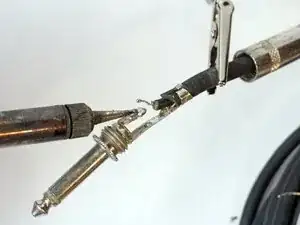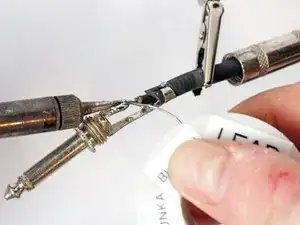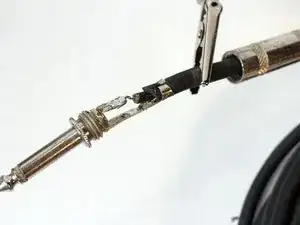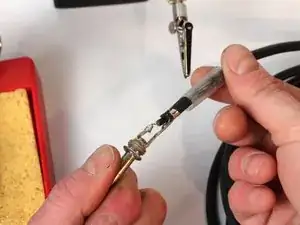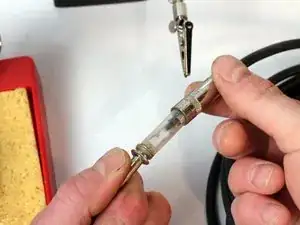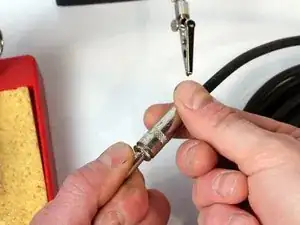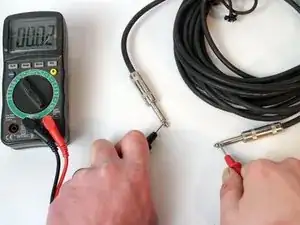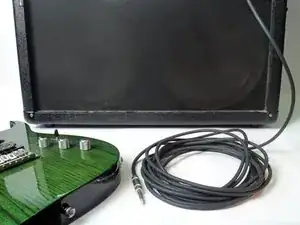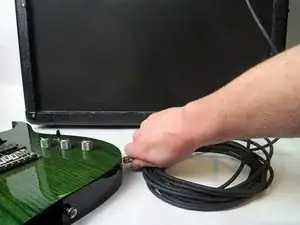Einleitung
With just some basic soldering skills, you'll save on having to buy a whole new cable. Chances are, one of the conductors broke off inside the plug. An easy fix for technicians and musicians alike.
Werkzeuge
-
-
Soldering Station + Solder
-
Multimeter
-
Wire Strippers
-
Helping Hands (highly recommended)
-
The Faulty Cable
-
-
-
Determine the continuity of each conductor within the cable by preforming a resistance test:
-
Turn the multimeter to the Ohm setting.
-
Place the positive lead on one of the plugs' sleeve, and the negative lead on the other plugs' sleeve.
-
The multimeter shows .01, which means there is some resistance between the two leads. This conductor has continuity, so it is not the Droid we're looking for.
-
-
-
Place the positive lead on one of the plugs' tip, and the negative lead on the other plugs' tip.
-
The multimeter reads OL (open loop) meaning no continuity, which means no amplified guitar sound.
-
So that's why nobody heard that epic solo...
-
-
-
If the cable itself looks good, ie. no breaks, tears, cuts, then it is most likely the plug end.
-
It doesn't matter which end you start with, it's a good idea to open and inspect both.
-
Firmly hold one of the plug ends by the tip and sleeve, and twist off the back body housing counterclockwise.
-
Well, Doctor, this one looks just fine. The signal conductor in the center is clearly connected to the center tab. Below, the shield is firmly soldered to the retaining tab. It must be the other one...
-
-
-
The source of the problem: the center signal conductor has broken off its tab.
-
That sweet guitar riff came out of the guitar, but ended right here at that break.
-
-
-
Twist the frayed ends of wire into a point. It may be necessary to use the wire strippers to strip back some extra material, depending on location of the break.
-
Fire up that soldering station.
-
Invite a small desk fan to join the party.
-
Always solder in a well ventilated area. This solder is 60% tin, 40% lead/flux, and 100% harmful to the lungs.
-
-
-
Apply the iron to the wire tip.
-
Melt solder onto the heated wire.
-
Tinning the wire before reconnecting it to the tab makes everything easier. Plus, you don't have to use as much heat, the insulation is less likely to melt, the wires wont fray; the benefits are endless.
-
-
-
Apply the iron to the tab.
-
Connect the newly tinned wire to the heated tab.
-
Add solder to the heated union.
-
Give thanks to the Helping Hands for saving you time (and saving your fingers).
-
Allow the area to cool before proceeding.
-
-
-
Slide the plastic insulation sleeve over the plug body.
-
Sometimes that sleeve is tucked back into the plug housing. If so, dig it out.
-
Be certain the plastic covers the entire plug body. Its purpose is to insure that the signal conductor is protected from the ground conductor.
-
Screw the plug housing back onto the plug body.
-
-
-
The multimeter now reads the tip-to-tip conductor has some resistance. Continuity has returned!
-
All done, right? Not so fast...
-
-
-
Always check an audio cable in it's natural habitat. This ensures that the work is a complete success.
-
Plug an instrument into an amplifier using the newly repaired cable.
-
Jiggle the live cable to check if other issues are present. It is better to find that out now, and not on stage during that sold-out concert.
-
Crank amplifier up to eleven.
-
Rock out!
-
There, isn't that better than going out and buying a new one? How many countless hours have you played through Ol' Trusty? From the bedroom, to the garage, to the gig - so many different feet have stepped upon it that you just couldn't bring yourself to throw em' away! Congratulations on returning one more instrument cable to its happy place: making music.
